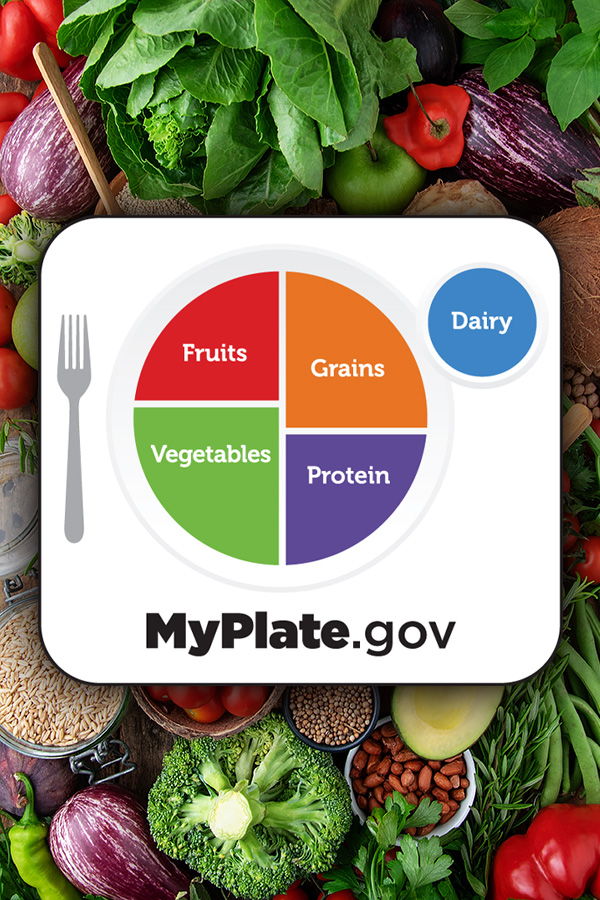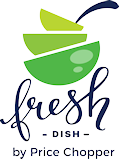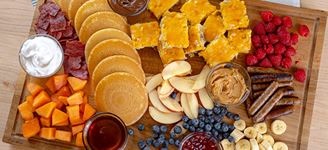Healthy eating is important at every life stage, with benefits that add up over time, bite by bite. Small changes matter.

Think of each change as a personal “win” on your path to living healthier. Start with a few of these small changes:
- Make half of your plate fruits and vegetables.
- Focus on whole fruits.
- Vary your veggies.
- Move to low-fat or fat-free dairy.
- Make half your grains whole grains.
- Vary your protein routine.
- Don’t forget physical activity! Kids need 60 or more min/day and adults need 150 or more min/week.
- Choose foods and beverages with less added sugars, saturated fat and sodium.
All food and beverage choices matter – focus on variety, amount and nutrition.
- Focus on healthy food and beverage choices from all five food groups.
- Eat the right amount of calories for you based on your age, sex, height, weight and physical activity level.
- Eat a variety of protein foods such as beans, soy, seafood, lean meats, poultry and unsalted nuts and seeds.
- Choose whole-grain versions of common foods such as bread, pasta and tortillas.
Make healthier habits easier.
- Buy fruits to have them available to add to your meal or eat as a snack.
- If you buy juice, select 100% fruit juice.
- Fresh, frozen, and canned vegetables count, too. Look for “reduced sodium” or “no-salt-added” on the label.
- Choose whole-grain versions of common foods such as bread, pasta and tortillas. Check the ingredients list for words “whole” or “whole grain.”
- Select seafood twice a week.
- Choose lean cuts of meat and ground beef that is at least 93% lean.
- Lactose intolerant? Try lactose-free milk or a fortified soy beverage.
Find more ideas and resources for healthy eating at myplate.gov.






